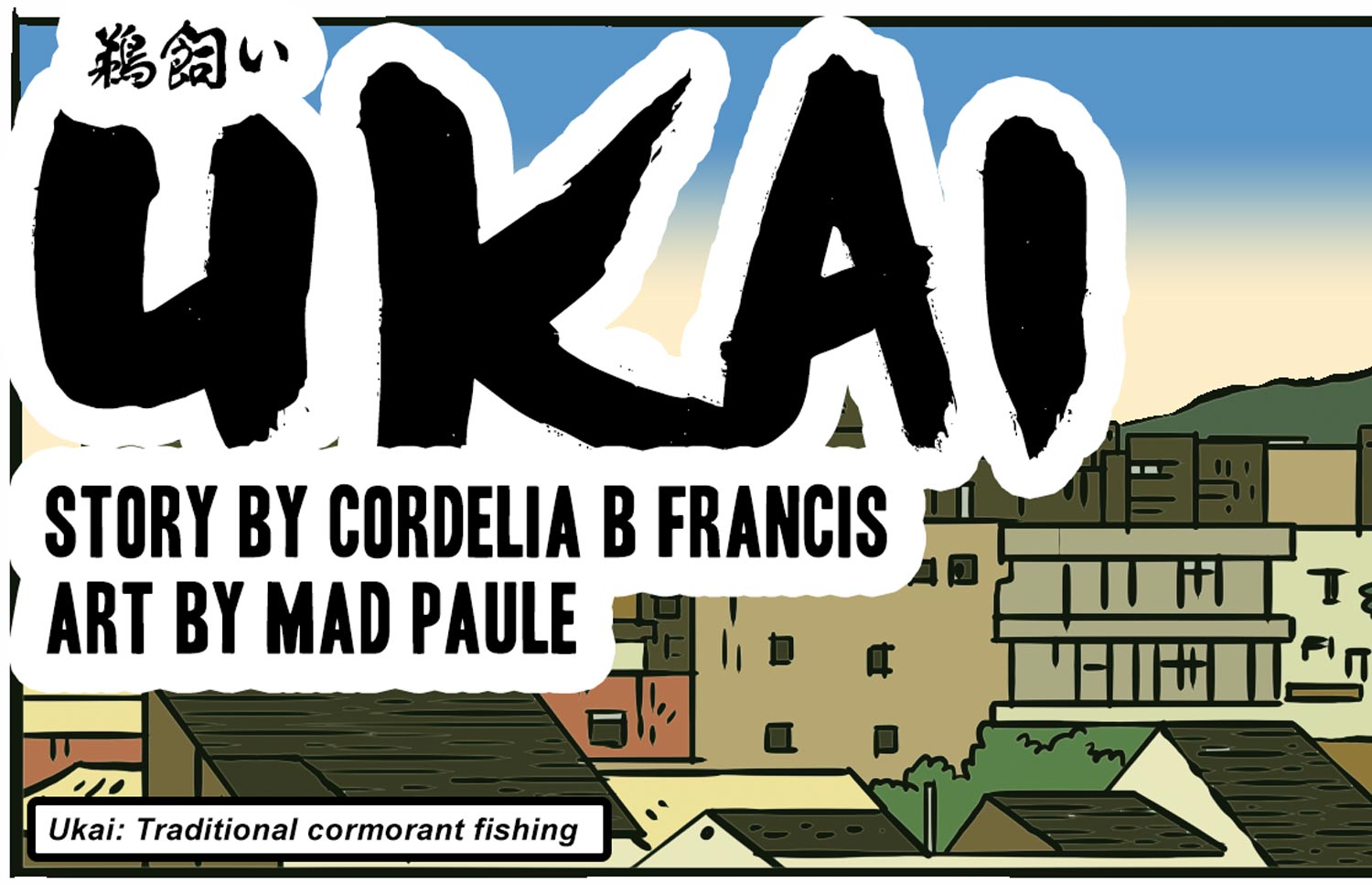
Vol 4 No 1 | Apr-Jun 2024
Ukai
Story by Cordelia B. Francis | Art by Mad Paule
A brief history of cormorant fishing
Historically, cormorant fishing has taken place in China and Japan, as well as in Greece, North Macedonia, and briefly, in England and France. In ancient Japan, it was once referred to as `duck fishing’ and is mentioned in the 7th-century Book of Sui.
Although this artisanal art was once a successful enterprise, today it mainly serves the tourism industry. It continues to be practised in south-western China where, unfortunately, it also faces the threat of competition from more modern methods.
The Art of Fishing with Birds:
Fishing with Birds:
In western Europe, cormorant fishing took place in the 16th and 17th centuries, primarily in England and France. In the 19th century, Francis Henry Salvin re-introduced the practice in England. This `second phase’ of English cormorant fishing lasted until about 1890.
The type of cormorants used varies by region. In China, they employ the great cormorant. In Japan, they use the Japanese cormorant, and in Peru, they utilise the neotropic cormorant.
The art of cormorant fishing (ukai) in Japan
Cormorant fishing is conducted at night. The fishermen venture into the rivers in wooden boats, each manned by a master fisherman and two boatmen. The fishing masters use the flames of the kagaribi (fire lantern) suspended on a pole over the boat to both see in the dark and lure the fish which, attracted by the light, swim to the surface of the water.
The trained cormorants dive to catch the fish. Special snares around their necks prevent the birds from swallowing the big fish which is instead regurgitated in the boat before the bird is released once again to continue fishing.
The fishermen wear traditional straw aprons, straw sandals, and black kimonos. You can watch cormorant fishing for free by standing along the riverbank east of the Nagarabashi Bridge in Kyoto or by spending an evening on one of the viewing boats. The latter requires a reservation in advance.
Notable enthusiasts of ukai include poet Matsuo Basho (1644-1694), who was so taken up with the ancient art that he composed a famous haiku about it, and actor Charlie Chaplin (1889-1977), who returned for a second viewing.
https://www.japan-guide.com/e/e2426.html
https://www.theguardian.com/artanddesign/gallery/2023/nov/20/japans-dying-art-of-cormorant-fishing-in-pictures
Ukai in Gifu City
The tradition has a long history in Japan. For over 1,300 years, cormorant fishing or ukai, has been in use along the Nagara River in Gifu City, currently one of only 12 locations in Japan where the practice continues.
The samurai warlord, Oda Nobunaga (1534-1582) brought the first ukai fishermen to Gifu City. Under his patronage, he gave them the official title of usho (cormorant fishing master). Tokugawa Leyasu (1543-1616) of the Tokugawa Shogunate further supported the art, even having the fish delivered to Edo Castle.
Today, six fishing masters in Gifu City, appointed by the Imperial Household Agency, continue this tradition on behalf of the Emperor.
https://visitgifu.com/see-do/cormorant-fishing-on-the-nagara-river/

